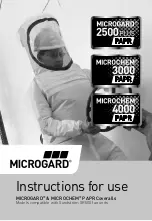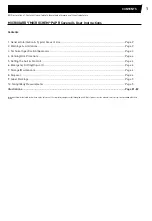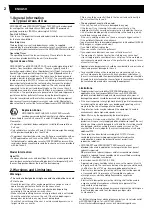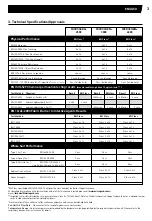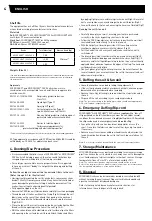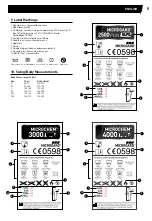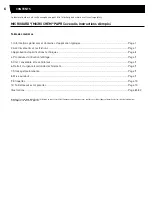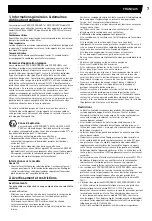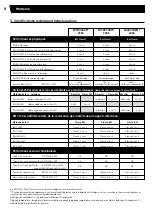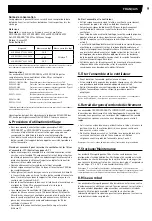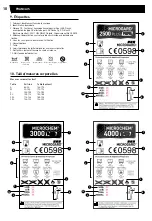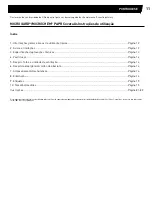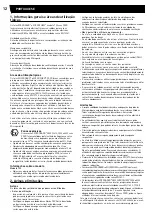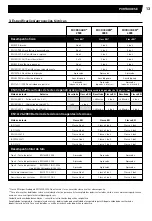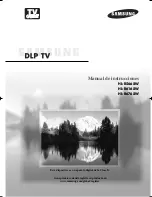
ENGLISH
2
1. General Information
& Typical Areas of Use
MICROGARD
®
and MICROCHEM
®
Model 700 PAPR suits are designed
for use together with Sundström SR500 and SR500 EX powered air
purifying respirators (PAPR) conforming to EN 12941.
Fan Unit & Filters
Prior to use, it is important to read and understand the user instructions
for the fan unit and filters.
Breathing Hose
The breathing hose is not included with your suit but is supplied
separately by the respiratory device manufacturer. For assistance contact
your respiratory device manufacturer or the MICROGARD technical team.
Operating Times
The operating times of the fan unit may vary. Please refer to the user
instructions provided with the fan unit for information.
Typical Areas of Use
MICROGARD
®
and MICROCHEM
®
PAPR suits are designed to protect
workers from hazardous substances. They are typically used for
protection against direct jets of liquid chemicals (Type 3), saturation of
liquids (Type 4) and particulate protection (Type 5) dependant on the
toxicity and exposure conditions. The fabric has also been proven to
provide a barrier to infective agents (EN 14126). The coverall has been
tested according to EN 1073-2 for non-ventilated protective clothing
against particulate radioactive contamination, however the product
does not protect from radioactive radiation. The suits are supplied
separately to the fan units and breathing hose. Prior to use the suit
should be connected to a fan unit with filters in accordance with these
instructions. The positive pressure generated in the head-top prevents
particles and other pollutants from entering the breathing zone.
If you feel uncertain about the selection, care and use of this equipment
please consult your work supervisor or your sales outlet. Alternatively,
please feel free to contact the Technical Department of MICROGARD Ltd.
Explosion Zones
MICROGARD
®
2500 PLUS, 3000 & 4000 PAPR coveralls
have been assessed by the Swiss Safety Institute and shown
to be suitable for use in Ex-Zones at 23
⁰
c and 30% relative humidity.
Please note:
• The product should not be donned (put on) or doffed (removed) in an
Ex-Zone.
• Only suitable for use in Zone 20 and 21, if the minimum ignition energy
of the powders handled is less than 10mJ.
• The product should only be worn in an Ex-Zone in combination with an
ATEX approved fan unit, such as the SR500 EX from Sundstro
̈
m. For
full details and/or advice please contact MICROGARD and consult the
respiratory device manufacturer and the instructions for use provided
with the fan unit.
Model Information
Model 700
• Features attached socks with boot flaps. The socks are designed to be
worn inside chemical protective wellington boots (sold separately), with
the over-flap positioned over the top of the boot opening.
2. Warnings and Limitations
Warnings
• The suits are designed as single use and should not be re-used
• Prior to use
- Visually inspect the suit for any damage that may impair correct
operation; pay particular attention to the seam areas
- Ensure the PAPR fan unit is securely attached and operating
according to the manufacturer instructions.
- Make sure the breathing hose runs along your back and is not twisted
- Check the exhalation valves on the suit. If the valve diaphragm is
damaged or distorted in any way it must be replaced
- Check that vision through the visor is not obscured by excessive or
large scratches or marks
- Filters should be correctly fitted to the fan unit and not directly to
the suit without the fan unit.
• The equipment must not be used:
- If the suit, fan unit or filters are damaged in any way
- If the fan unit is not running. In this abnormal situation, the
equipment will offer no respiratory protection. In addition there is a
risk of carbon dioxide quickly accumulating in the head top, which
would lead to oxygen deficiency
- If the surrounding air does not have a normal oxygen content
- If the pollutants/hazards are unknown
- In environments that are immediately dangerous to life and health (IDLH)
- With oxygen or oxygen enriched air
- If you find it difficult to breathe
- If you can smell or taste the pollutants
- If you experience dizziness, nausea or other discomfort
• The wearing of chemical protective clothing may cause heat
stress if appropriate consideration is not given to the workplace
environment and performance of the protective clothing in terms
of comfort ratings.
• Appropriate undergarments should be considered to minimise heat
stress and prevent damage to the suit.
• Care should be taken when removing a contaminated suit, so as
not to contaminate the wearer with any hazardous substances. If
the suit is contaminated then decontamination procedures should be
followed (i.e. decontamination shower) prior to removal. Always leave
the contaminated area before removing the equipment.
Limitations
• The determination of suitability of MICROGARD products for an
application is the final responsibility of the user. All MICROGARD
products are intended for single use. Upon contamination, wear or
damage the garment should be removed and appropriately disposed of.
• If the user is exposed to very high work intensity, partial vacuum may
occur during the inhalation phase or bending and squatting, which
may involve the risk of leakage into the head top
• The protection factor may be reduced if the equipment is used in
environments where high wind speeds occur
• Never lift of carry the equipment by the breathing hose
• Where the suit is to be worn with other PPE, and for full “Type”
protection, it is necessary to apply additional adhesive tape at the suit
interfaces. Gloves should be taped to cuffs and the storm flap should
also be taped, whilst ensuring there are no gaps or creases. The
user shall be the sole judge for the correct combination of suit and
additional PPE.
• The coverall has been tested according to EN 1073-2 for non-
ventilated protective clothing against particulate radioactive
contamination, however the product does not protect from
radioactive radiation.
• MICROGARD
®
and MICROCHEM
®
PAPR coveralls are not
intended to be used in applications where protection from gases/
vapours is required.
Where resistance to gases/vapours and/or increased mechanical
strength is required then ensembles which are certified according
to EN 943-1 should be considered.
• In accordance with EN 1149-5: 2008;
- Appropriate steps should be taken to ensure the wearer of suit is
properly earthed. The resistance between the person and the earth
shall be less than 10
8
Ω
, e.g. by wearing adequate footwear.
- Electrostatic dissipative protective clothing shall not be opened
or removed whilst in presence of flammable or explosive
atmospheres or while handling flammable or explosive
substances.
- Electrostatic dissipative protective clothing shall not be used in
oxygen enriched atmospheres without prior approval of the
responsible safety engineer.
- The electrostatic dissipative performance of protective clothing can
be affected by wear and tear, laundering and possible
contamination.
For further information or advice please contact your local sales outlet
or MICROGARD Ltd on Tel: +44 (0) 1482 625444,
E-mail: technical@microgard.com or visit www.microgard.com
Summary of Contents for 2500 PLUS PAPR
Page 3: ......
Page 84: ...ILLUSTRATIONS 81 B2 D F E A B C ...
Page 85: ...82 ILLUSTRATIONS G CORRECTLY FITTED SUIT H I REAR FRONT ...
Page 86: ...83 ...


